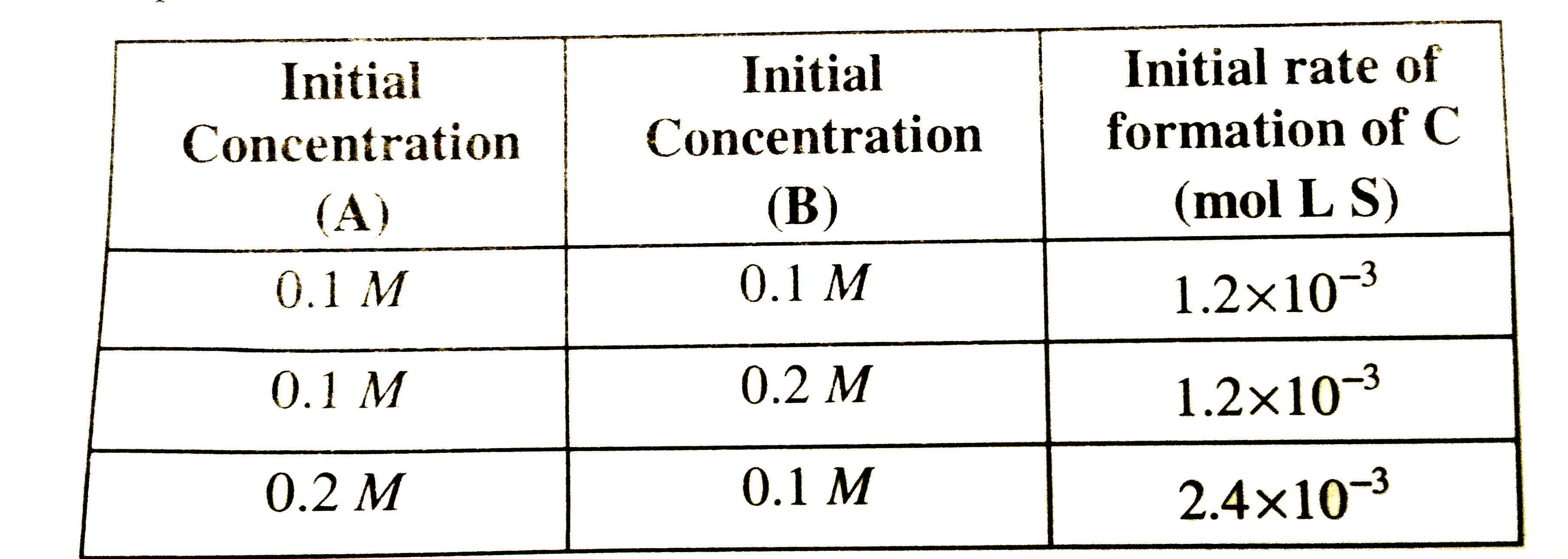For the non-stoichiometric reaction 2A+B→C+D, The following data were obtained in three separate experiments, all at 298 K.

The rate law for the formation of C is:
dcdt=k[A]
dcdt=k[A][B]
dcdt=k[A]2[B]
dcdt=k[A][B]2
The correct Answer is:A
First order w.r.t. A and zero order w.r.t. B
∴ dcdt=k[A]
Similar Questions
For the non – stoichiometre reaction 2A+B→C+D , the following kinetic data were obtained in three separate experiments, all at 298 K

The rate law for the formation of C is:View SolutionFor the non-stoichiometre reaction 2A+B→C+D , the following kinetic data were obtained in three separate experiments , all at 298 K

The rate law for the formation of C isView Solution
Knowledge Check
- Question 1 - Select One
For the non-stoichiometric reaction:
2A+B→C+D, the following kinetic data were obtained in three separate experiments, all 298 K

The rate law for the formation of C is:AdCdt=k[A]BdCdt=k[A][B]CdCdt=k[A]2[B]DdCdt=k[A][B]2 - Question 2 - Select One
For the non-stoichiometric reaction 2A+B→C+D, The following data were obtained in three separate experiments, all at 298 K.

The rate law for the formation of C is:Adcdt=k[A][B]Bdcdt=k[A]2[B]Cdcdt=k[A][B]2Ddcdt=k[A] - Question 3 - Select One
For the non-stoichiometric reaction 2A+B→C+D
The following kinetic data were obtained in theee separate experiment, all at 98K
∣∣ ∣ ∣ ∣ ∣∣Initial concentration (A)Initial concentration (B)Initial rate of formation of C(molL−1s−1)0.01M0.1M1.2×10−30.1M0.2M1.2×10−30.2M0.1M2.4×10−3∣∣ ∣ ∣ ∣ ∣∣
The rate law for the formation of C is:Adcdt=K[A][B]2Bdcdt=k[A]Cdcdt=k[A][B]Ddcdt=k[A]2[B]
For the non-stoichiometric reaction 2A+B→C+D, The following data were obtained in three separate experiments, all at 298 K.

The rate law for the formation of C is:View SolutionFor the non-stoichiometric reaction:
A+B→C+D, the following kinetic data were obtained in three separate experiments, all at 298K.

The order of the reaction is.View SolutionFor the given reaction, A+B→ Products following data were obtained

(i) Write the rate law expression.
(ii) Find the rate constant.View SolutionFor the reaction
A+2B→2C
the rate law for the formation of C isView SolutionIn the reaction a+3B→2C, the rate of formation of C is
View Solution
